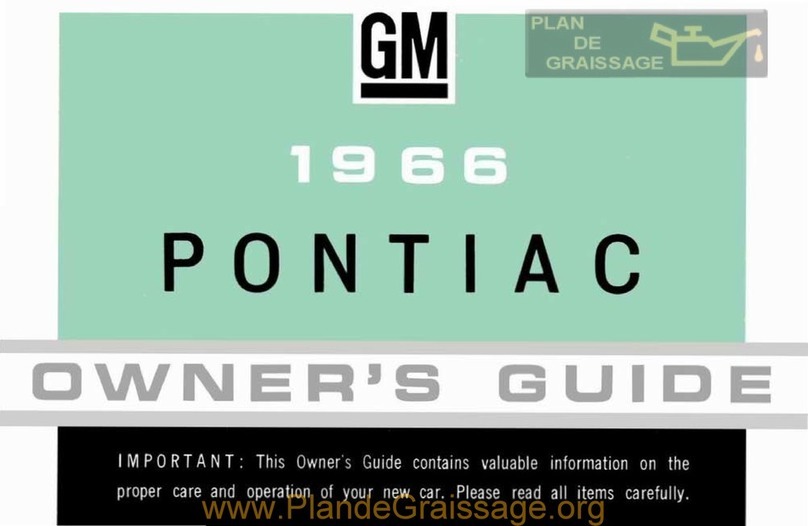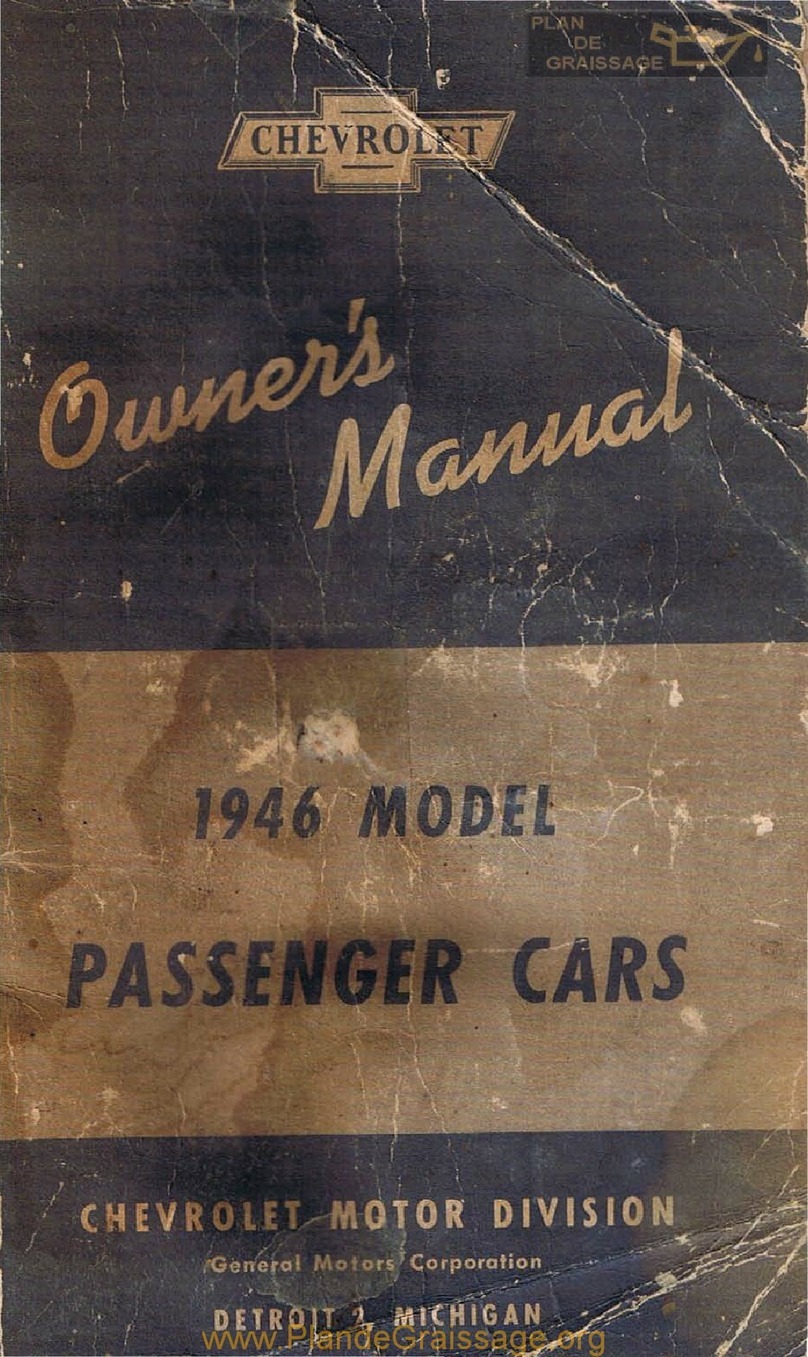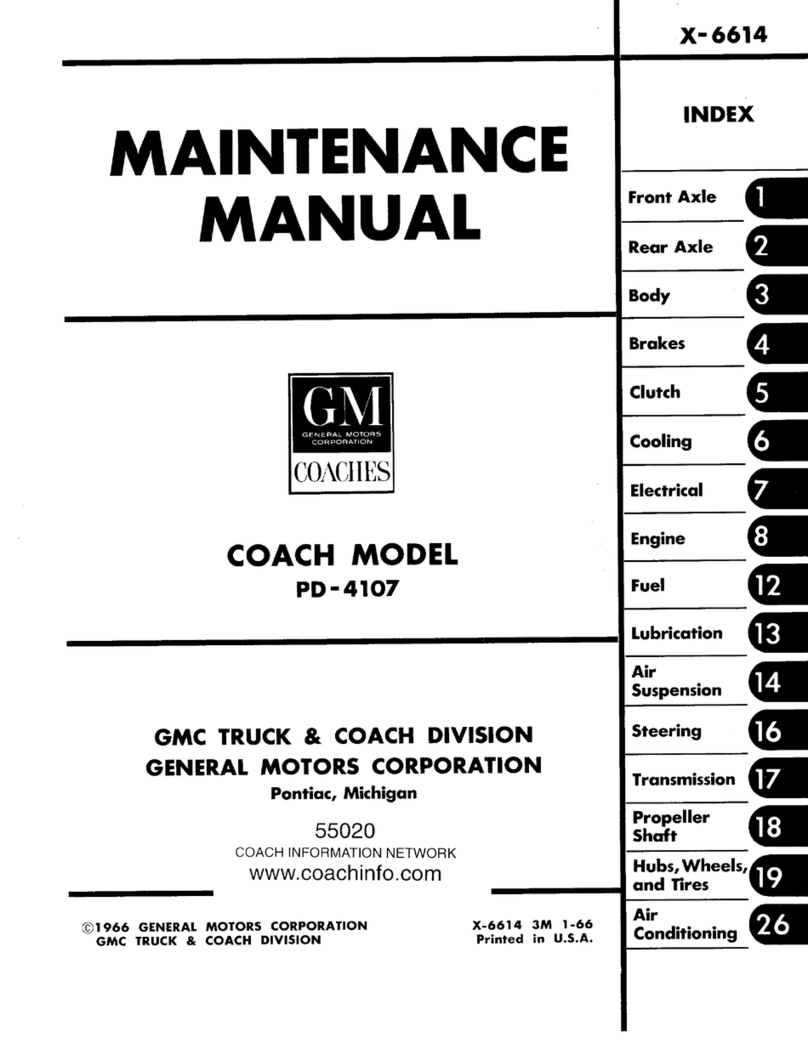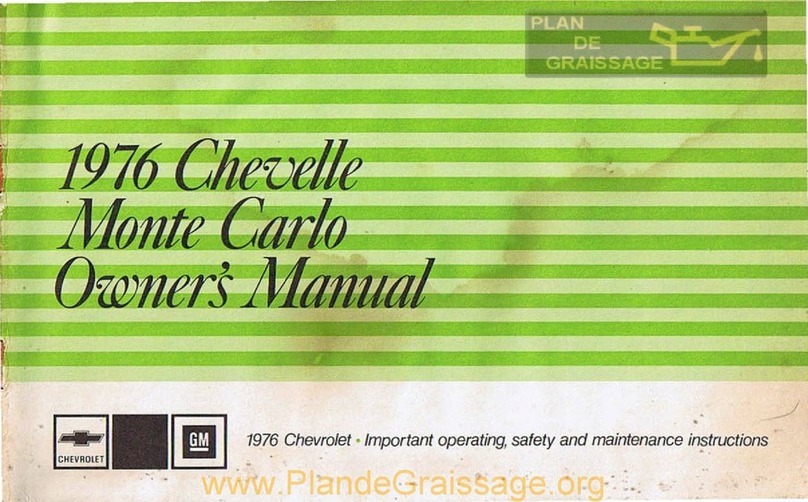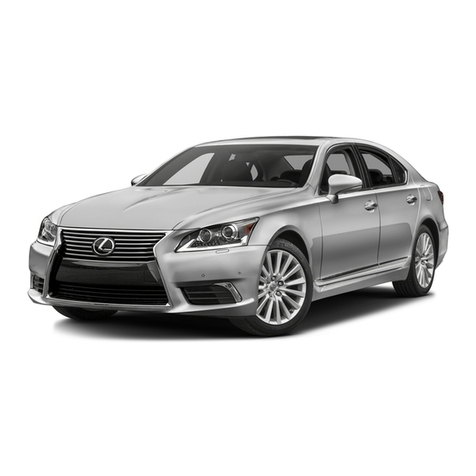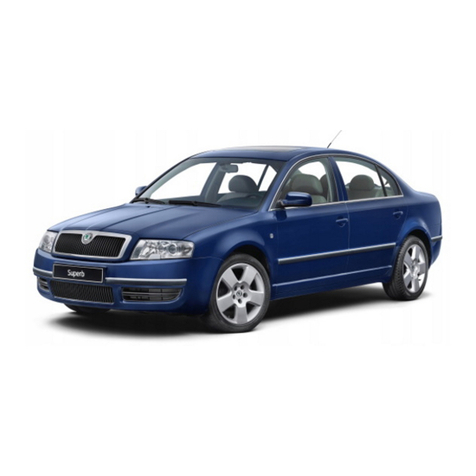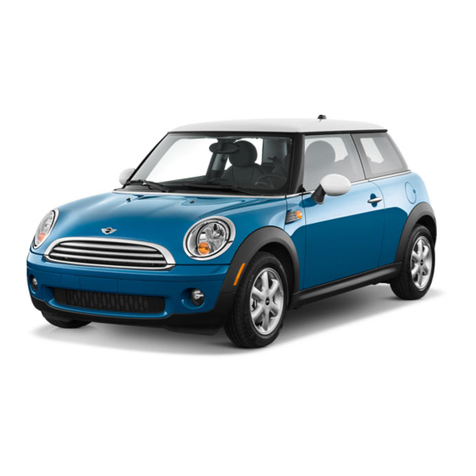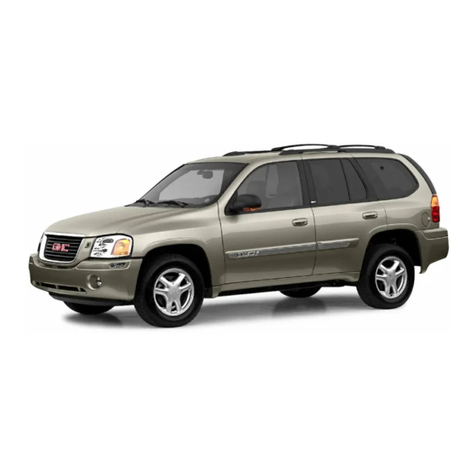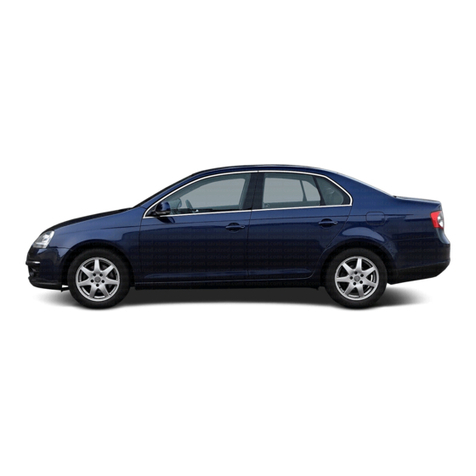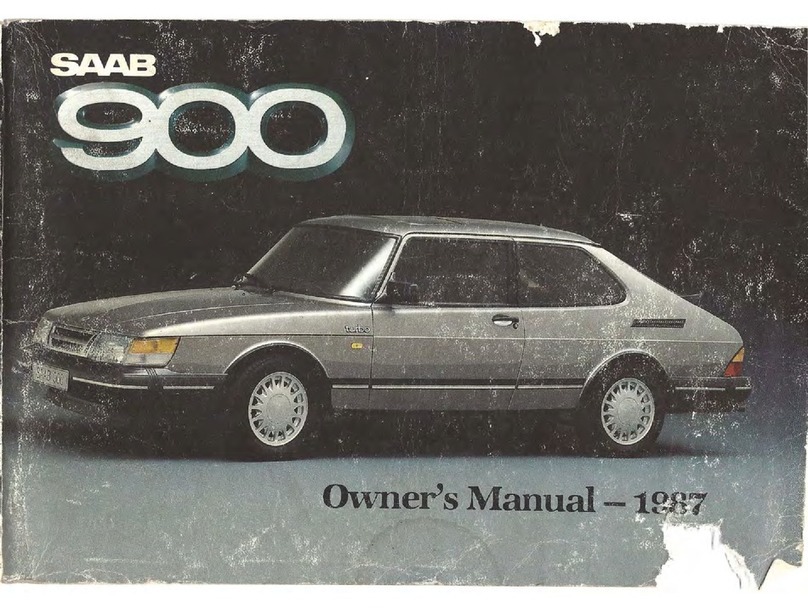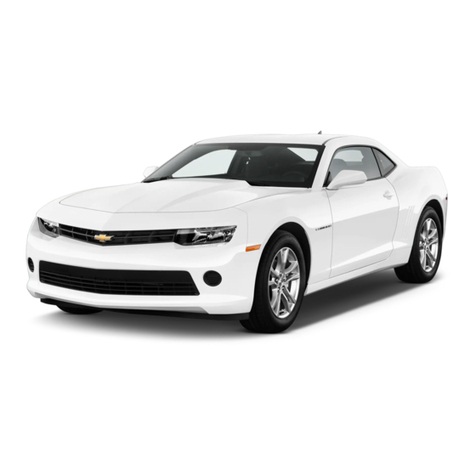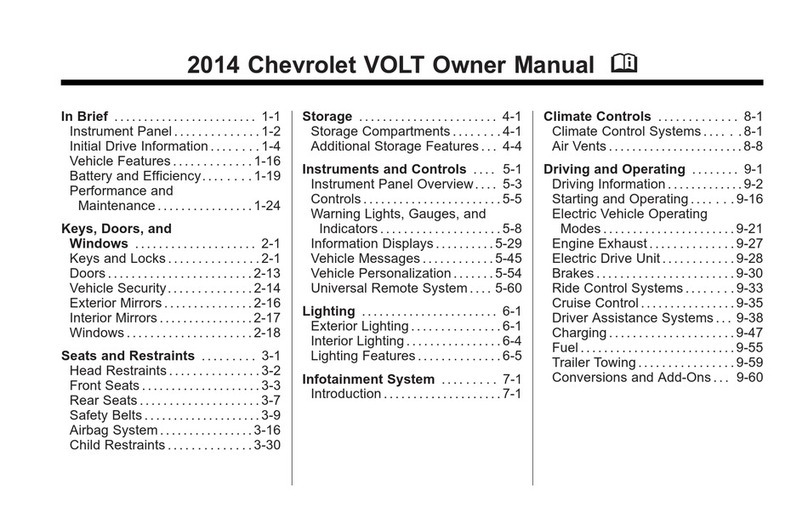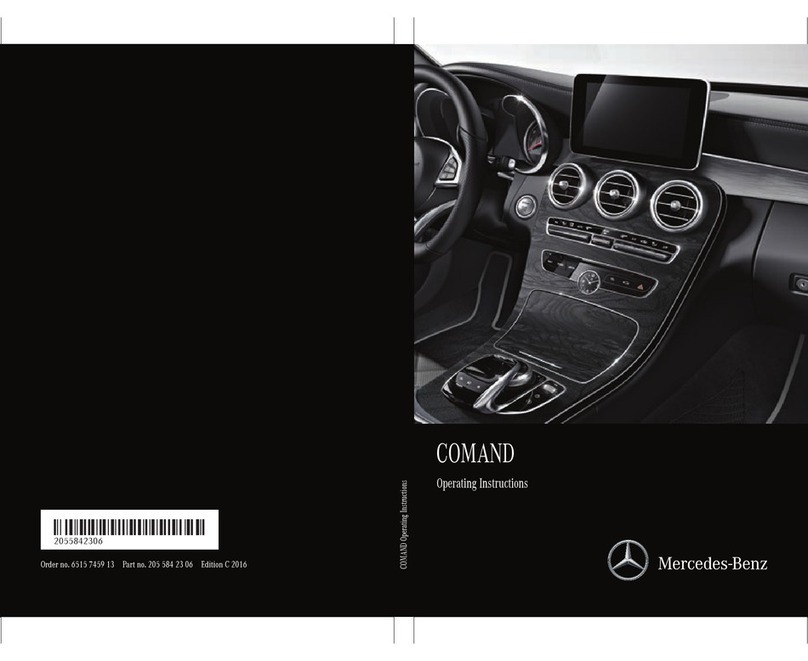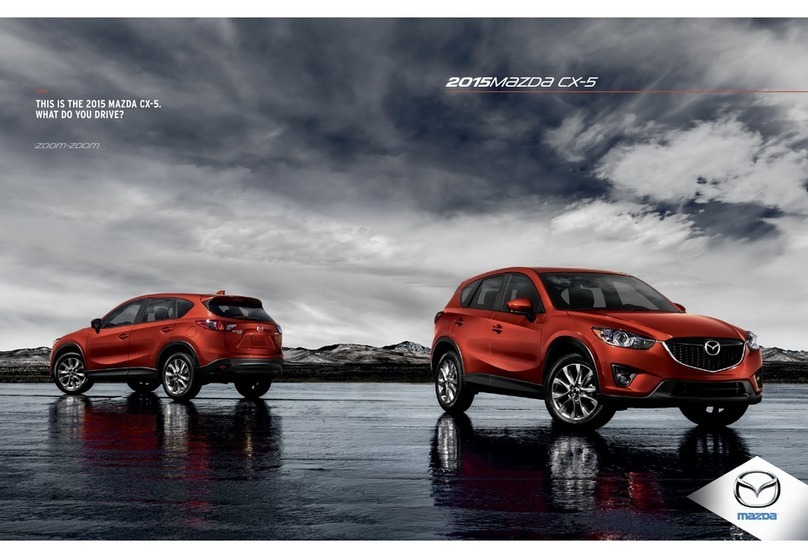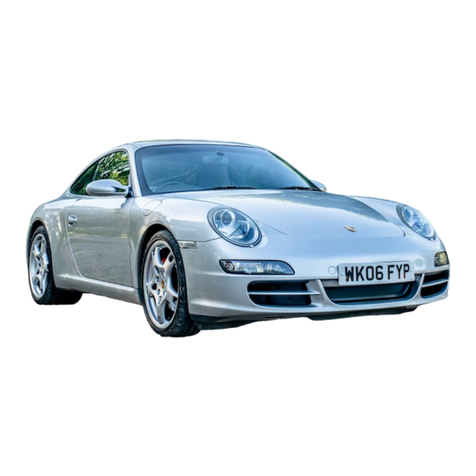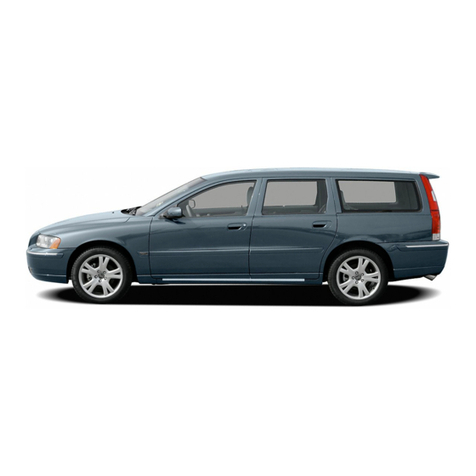GM Chevrolet 1942 User manual

www.PlandeGraissage.org

OWN
ER7
SM
ANUAl
1942
PH
SSE
nG
ERG
ARS
SEConD
EDITion
Printed
Octob.
r
15,19
41
CHEVROlET
mOTOR
DIVISion
GENERAL
MOTO
·
RS
S
ALE
S CORPORATION .
DETROIT,
MICHIGAN . .
..
....
.
,
;
www.PlandeGraissage.org

2 •
u~-
THE
DOOR
TO
FRIEnDSHIP
Y
OU
have purchased a new Chevrolet cat,
and
that
purchase
means
a
great
deal
to
you,
to
your
Chev·
ro
l
~t
dealer,
a~d-
to
Ch
evrolet.
-
To
you)
it
means
possession
of
a fine
motor
car.
To
your
Chevrolet
dealer,
it
means
an
opportunity
-
and
an
obligation-to
help you realize
trUl~
satisfaction
wJth
your
investment.
Arid
to
Chevrolet,
it
means a
large
and
wilting
interest
in
maintaining
your
can·
tinued
s,3risfaction,.
for
the
entire
Chevrolet
organiza.
tion
desires
not
merely
to
make
sales,
but
also
to
make friends.
Our
interest
in
you,
as a
Chevrolet
owner,
and
in
your
ca
r, as a
Chevrolet
product,
will
continue
during
all
the
months
and years
that
you
drive
your
Chevro
let.
We want
to
make
...
Chevrolet
ownership
the
roost
pleasant
mo.~or
cat
,
experience
you
have
ever
enjoyed.
We ask
you
to
read
these
pages carefully.
They
are;
the
key
to
a
better
-
and
mutual
understanding,
and
will
open
the
door
of
friendship
between you) y
our
Chev~
r
olet
dealer,
and
Chevrolet.
'.""
:
www.PlandeGraissage.org

GEnERAllnFORffiATIOn
MANUFACTURER
'S
WARRANTY
It
is expressly agreed
that
there
are
no
warrant
ie
s,
expressed
or
implied,
made
by eit
her
the
Dealer
or
the
Manufacturer
on
Chev~
rolet
motor
vehicles, chassis
or
parts
furnished
hereunder,
except
th
e
"Manufacturer's
warranty
against
defective
materials
?t
wor
b
manship
as follows:
"The
Manufacturer
warrants
each
new
motor
vehicle,
incl
u
ding
all
equipment
or
accessories
(except
tires)
supplied
by
the
Manu-
facturer,
chass
is
or
part
manufactured
by
it
to
be
free
from
defects
in
materil~J
and
workmanship
under
normal
use arid
service, its
obligation
under
this
warranty
being
limited
to
mak
-
ing
good
at
its
factory
any
part
or
parts
thereof
which
'
shall,
wi
thin
ninety
(90) days after delivery
of
such
vehicle
to
th
e
original
purchaser
or
before
such
vehicle
has
been
driven
4.000 miles, \",hichever ev
ent
shall
first occuT,-
be
returned
to
it
with
tra
n
sportation
charges
prepaid
and
which
its
examination
shall
disclose
to
its
satisfaction
to
have
been
thus
defective;
(his
warranty
being
expressly
in
lieu
of
al~
other
warranties
,
ex~
pressed
or
implied,
and
all
.other
obHg~tions
or
liabilities
on
its
pan,
and it
neither
assumes
nor
authorizes
any
other
pe
rson
"
to
assun:e
for it
any
other
liability
in
connection
with
the
'Sale
of
its
veh
icles.
"T
his
warranty
sha
ll
not
apply
to a'
ny
vehicle
which
-
shall
have
been
repaired
or
altered
outside
of
.
an
_
authorized
Chevr
olet
Serv~ce
Station
in
any
way
so
as
in
th
e -jud
gmen
t
of
the
Manu~
facturer
to
affect.its
stability
and
reliability,
nor
wh
i
ch
has
been
subject
to
misuse, negligence
or
accident.
H
* * *
The
Manufacturer
has
reserved
the
right
to
.
make
cha
l)ges
in·
..
~1
de
sign
or
add any
improvements
on
motor
vehicles
and
chassis ;
it
any
time
without
incurring
any
obligation
to
install
same
on
motor
vehicl
es.
and
chassis
previously
pure
.
hased.
·3
/
...
~.
www.PlandeGraissage.org

,>
POLICY
The
Dealer also agrees to promptly perform
and
fulfill all
terms
and
conditions ,
of
the
Owner Service Policy.
REPAIR
PARTS
Genuine
C~~vrolet
parts
manufactured
[0
the
same rigid
specifications as
the
parts used
in
the
original assembly of
the
car, are carried
in
stock-by
Authorized
Chevrolet
Service
Stations.
Use only
Genuine
Chevrolet
parts for
replacement
purposes,
because
they
are
better
and
cheaper.
They
are
so
ld
at
uniform
prices
throughout
the
United
States.
Printed
price
lists
published
by
the
Ch
evrolet
Motor
Di
vision
are
open
to
the
inspection
of
owners at any Authorized
Chevro
let Dealer's establishment.
SERVICE
CHARGES
Charges prevailing at Authorized, Chevrolet Service Stations
are, based
on
Flat Rare schedules fur(lished by ,rhe Chevroler
Motor Divisi.on. These Flat Rates are-
bas~d
on
the
use
of
methods
and
tools
approved
by
the
Chevrolet
Motor
Division, assuring
the
highest quality
of
work
at
the
lowest possible
price
consistent
with
this quality.
Protect
your "investment by
having
your
replacement
repair
and
maintenance
,work
done
by
an
Authorized
Chevrolet
Service
Station,
which
has
.
aU
the
necessary tools
and
the
factory~trained
men.
,
GENUINE
CH
,
EVROLET
ACCESSORIES
The
materials used
in
the
manufacture
of
these accessories
are
of
the
highest
and
finest quality.
These
accessories
will
appeal-
tp
every discriminating
Chev
..
rolet buyer.
They
offer
him
the
opportunity
to
show
his indi-
viduality
in
the
selection
of
added touches
of
refinement a
nd
luxury
for his car.
They
ate
carried
in
stock by all
Chevrolet
.Dealers.
4 . '
www.PlandeGraissage.org

BREAHlnG-ln
PERIOD
Your
Chevrolet car has -been designed
to
furnish you many
thousands
of
miles
of
motoring plea_sure.
In
order
to
maintain
its
~igh
",
standard
of
performance
and
efficiency, special
care
should
be
given
for
the
first
two
thousand
miles as to
the
speed
at
which
the
car
is
driven
and
also
to
lubri~
cation.
To properly
break
in
the
moving parts
of
the
car, do'
not
drive
faster_
than:
40
Miles per
hour
for
the
first 100 Miles
50 Miles per
hour
for
the
next 200 Miles
60
Miles per
hour
f
or
the
next
200
Miles
Continuous
high
speed
driving
should
not
be
attempted
until
the
car
has been driven
ZOCX)
miles.
See
that
your car
is
lubricated
at
regular intervals
in
accord·
ance with
the
recommendations
under
"General
Lubricatio
n."
WAYS
TO
SAVE
GAS
AnD
Oil
How many miles
do
you
get
to
'
the
gallon? Unless you are
the
exception,
you
can
get still
greatet
'l!lileage.
And
without
costl
Just
eliminate
a.fewi
pf
t}:l
.eJal;llts which
most
of
us
have
and
which
tend
to
waste
gasoline
and
oil.
Some
of
the
most
common
ones
are
listed
here.
S
tudy
them!
Correct
them
and
you'll
save
on
fuel bills.
Quick
Get-Awcys
are
thrills
that
cost
money.
Tramping
suddenly
on
the
accelerator,
or
pumping
it,
feeds '
your
motor
more
gasoline
th~n
it
can
use.
Quickget~aways,
too,
waste
gasoline
by
carrying
you
toO
far
in
second
gear:
Get
away
easily
and
smoothly
to
save gasoline. Slip
int
o
high
gear
at
20
to
25
miles
per
hour.
Sudden Stops are .sometimes necessary,
but
always use
extra
gasoline.
Stopping
gradually,
with
the
eng
in
e
braking,
saves gas
money-and
brake
lining,
too.
·5
www.PlandeGraissage.org

H
i~
h
Speeds
are more
than
dangerous.
At
70
miles
per
hour
yOut
motor
uses alm
ost
twice as
much
gasoline,
to
go
one
mile, as
it
does
at
20 miles per
hour.
Economical cruising
speeds are
30
to
45
M.P.H.
Soft
Tires are
hard
on
yo
ur
gasoline bill.
They
mean
more
road
friction.
This
gives
your
motor
unnecessary
work
to
do
and
makes it use
ext
ra gas. Keep
the
extra
money
in
your
pocket
by keeping your tires inflated
to
the
recommended
pressures.
Parking
in
the
Sun wastes gasoline.
Par
k
your
car
in
the
shade,
if
you
can,
so
that
the
hot
su
n will
no
t
evapo
rate gas from your
tank.
An
Idling
Motor
is
a useless expense.
Turn
it
off while
you are waiting at
the
curb
for a friend,
or
at
a
train
crossing.
An
Inefficient
Carburetor
is
an
efficient gasoline waster. Have
yours checked
at
l
east
twice a year
(for summer
and
winter
driv
in
g)
to
be
sure it
is
properly adjusted,
that
the
octane
selector is properly
s~t,
and
that
the
sediment
bulb
is
clean.
Cheap
Lubrication is a waste
of
money. Use
oil
of
good quality
and
of
the
grade specified
by
the
manufac;
turer.
Have
your
car
well greased every
thousand
miles.
One
faulty
or
Dirty
Spa
rk Plug
may
waste much
of
your
gasoline.
An
Over
..
.
FulJ
Crankcase wastes oil
and
does
not
give you
better
lubrication, despite theories
you
may
have
heard.
Keep your oil level
within
the
limits
marked
on
th
e
"bayonet"
gauge in
the
crankcase.
To
Obtain
Ma
ximum Efficiency
and
greatest gas mileage,
have
a
comp
lete
motor
tune;up
per#
fan
ned
every 5,
CXXJ
miles
or
at
least twice a year.
6·
www.PlandeGraissage.org

Th
e following
table
will
indicate
some
of
the
things
which
shou
ld
be
done
at
regular
mileage
intervals
to
assure
your
receiving
the
maximu~,
not
only
in
perfo
rma
nce,
but
in
economy.
C:>mpl
c{c
Pack
Lub
rkat
Chang
f:
Clean Clean
Cros
,...
Che
ck
Tu
n"
n
'peccion
Front
Mileage
Cha$
$i$
Oil
Air
S
park
Change
Shock
Engi
ne
B,
Wh"f:l
. t
Cl
...
"mer Plugs
Tir
...
~
Ahsorbers
Dealer Bearings
----
---
----
-
--
1-
--
---
- -
"-
sao
x
1000 X
2000 X X X
3000 X X X
4000 X X X
~
~
~
5000 X X X x
1-
--
..
..
..
.
..
.-
..
--_
..
_--
•.
.. .
..
-•
..
_,._
'-
-
6000 X X X X X
7000 X
8000 X X X
9000 X X X
10000 X X X X X X X
11000 X
12000 X X X X X
13000 X
14000 X X X
15000 X X X X X X
.,
For
complete
tnstrucnons,
see
Chart
on; pages
S4
an
d
:J
S.
t
For
complete
recommendations
on
cha
ng
in
g
oil
a
nd
the
proper
grade
of
oii
to
use
see pages
4S
t051.
The
following
opera
tions
sh
ould
be
done
as
indicated'---
Check.
Check
Air
Chani/e
Rear
T
:;~:
.
n
l~b.
Add
Anti·
i
Rush
Co
ol-
Per
iod
Battery
In
Tires
Ax
le
Lub
. Free." ! ;
nll
Sy
stem
Weekly X X
Sp
rin
g X X X
Fall . X X X X
,
· 7
www.PlandeGraissage.org

SAFETY
BUILT
IN
YOUR
CAR
Your
Chevrolet
has
been
designed
and
built
to
give
you
many
thousands
of
miles
of
driving plea-sure
and
com
fort.
The
body
is
of
ail-steel cons
tructi
on,
well
in
sulated against
heat
and
sound
.
The
interior
appointmems
h
ave
been
made
to
assure
comfort
and
safety.
The
adjustable
front
seat, safety
glass,
contro
lled
vent
ilation,
and
recessed
control
knobs
on
the
instrum
ent
panel
are examples
of
this
safety
in
design.
The
headlights are controlled
by
the
left foot when changing
from
the
upper to the lower beam, which· leaves t
he
right foot
and
both
hands
free
to
control
the
car. Always use
the
low beam
when
approaching
and
passing
another
car.
The
hydraulic brakes are
the
safest and most dependable sys-
tem
of
brake
s ever used,
exertin
g
equal
brake
pr~ssure
on
all
four
wheels.
The
hand
brake
lever,
under
the
inst
rument
pane
l
to
the
left
of
the
steering wheel, is easily reached.
HIGHWA
Y
SAFETY
One
of
the
most
important
aspects of -
mot
oring
,these
days
is
motoring
safety. Safety
campaigns
are
consta
ntly being held
in
the
major
cities.
Many
states
now
have
"
compulsory
inspec·
tion
laws.
Various
comm
issi
ons
have
been
appointed
to
study
the
prob
lem
and
make
further
recomm
end
ati
ons
to
l
eg
isl
ative
bodies.
The
primary
responsibility for traffic safety lies
with
th
e mocor
car driver.
The
most
co
m-pet
ent
drive
"r always
'"
keeps in
mind
the
"
other
"fellow. Always
signa
l
the
ot
her
driver
to
let him
know
when
you
are
going to
StOP,
"
make
a
turn,
or
pull away
from
the
curb.
Proper
signaling will
do
away
with
one
of
th
e
most
dangerous
traffic
hazards-the
sudden,
unexpected
move.
The
State
Highway
Departments,
Automobile
Clubs,
and
car
manufacturers
work
together
in designating
hi
ghwa
ys
through
various
types
of
road
markers
to
make
driving safer.
8 •
www.PlandeGraissage.org

You,
the
driver,
should
always
obey
these markers.
Extra
care sh
ou
ld be used
at
nig
ht
-
part
icula
rl
y
when
driving
over
strange
roa
ds.
Be
constan
tly alert
and
drive
courteo
usly.
Downhill
When
driving
down
a steep grade. it
is
advisable
to
shift
into
second
gear
and
som
et
imes '
into
first
gear.
This
will allow
the
mot
or
to
act
,as a
brake
on
the
car
and
will n
ot
o
nl
y assist materially
in
keeping
the
car
under
control,
but
al
so
redu
ce
th
e wear on
brake
shoe
facings
and
bra
ke
drums.
Uphill W
hen
driv
in
g
up
a
'~
steep
grade, it
is
adv
isable
to
shift
int
o
second
gear. ·:This will
avoid
placing
und
ue
strain
on
the
motor
and
dutch
~nd
is
also
more
economica
l on
the
gaso
lin
e.
Overtaking
or
passing a
car
on
a
hill
or
curve is
dangerous
as
you
ca
nnot
see an
ot
he
r
car
approac
hin
g.
Starting
on
a Hill
When
it
is
necessary
to
s
tart
yo
ur
car
on
a
hill,
yo
u will find it
much
easier if, before
starting
,
you
set
the
hand
brake
lever
[0
ke
ep
the
ca
r
from
rolling
bac
kward.
Put t
he
shifting lever
in
first spee'
4,
gradua
lly release
the
dutch,
press
down
the
accelerator.
and
wh
en
the
car
starts
to
move
forward, or
the
eng
ine
starts
to
la
bor, slowly release
[h
e
hand
brake
lever.
;,:
.
~.;~
~
Curves
When
approaching
a curve,
do
not
cross 9xer
..
ti)e.
:>r.;.:~.
": ' .
..
......
',
..
.
il\·'
.
~
ce
nter
of
the
road
to
pass a
car
ahead
of
you:
·
'
·
Bef-<?te
~'
~·i/"'w
e
ntering
a curve, sl
ow
down
to
a safe speed ,
and
make
the
'
t~
;~
'
~ ~
:
.
,.
int
o ·[he'
curve
at
th
e
extreme
ri
gh
t ·side.
Slippery
.
Roads
When
sta
rtin
g
on
ice or slippery
p
·
a~emen
t,
it
is safer to h
ave
the
sh
ifting lever
in
either
seco
nd
or
hi
gh gear
to
re
du
ce
the
tend
ency
of
the
rear wheels
to
sp
in
. In sta
rt
ing
in
deep
snow,
always use first speed
and
accelerate
the
engine slowly.
Tire Blow-Out .
Do
n
ot
jam
on
tht::
brakes. Hold
the
car as
steady as possible
until
it
slows
dow
n to a
moderate
speed
and
then gradually
app
ly
the
brakes. .
~
www.PlandeGraissage.org

Skidding
If your car starts
to
skid.
do
not
jam
on
the
brakes.
Turn
the
front wheels in the direction
of
the
skid
and
Cj.t
the
same
time
take
your
foot
off
the
accelerator
gradually.
Sand and Gravel
When
approac
h
ing
,3
sandy
or
gravel ro
ad,
always
use
extra
caut
i
on
unt
il
you
k
now
the
cond
i
tion
of
the
road.
Driv
i
ng
into
l
oose
sand
or
gravel
at
a fast
speed is
dangerous,
as a
su~den
s
hi
f
tin
g of
the
gravel
may
cause
you
to
lose
control
of
the
steering.
We suggeSt that whenever
and
wherever you drive, you do
so
with
the car compl "
relY
under
cont
rol, at
all
times,
and
practice
the
three
"C's'
.'.
of
safety-
CARE
COURTESY
COMMON
SENSE
10·
www.PlandeGraissage.org

conTROLS
Ano
InSTRUmEnTS
Fig. J
-Con'ro/J
and
Insf(umen
ts
IFleetmos'er)
The
driver
of
a car should familiarize himself with the various
contro
ls
pro
vided for its proper
handlin
g.
Th
is
does
nO[
apply
to
the
beginner
al
one
, as a
lth
ough
there
are m
any
points
of
siJ;nihirity·
amo
ng all cars,
th
ere
are
also
important
differences.
It
is
.'
not
wi
se,
.regardless
of
previous experience,
to
drive a new
o~
'
;
diff~r~nt
make
of car before fully understanding what each co
ntro
i
is
for
and
h
ow
to
use
it.
KEYS
AND
LOCKS
The
locks for b
ot
h right
and
lef
t-
hand
front doors and the ignition lock
have
th
e
same
keys. T
he
rear
compart~
menr
and
gl
ove
co
mpartme
nt locks
.
have
th
e
sa
~
e
keys.
The
l
ock
number
is
stamped
on
the
knock~out
plug
in
the center
of
the
key.
To
pr
ote
ct you
in
case your keys
·11
"
~'.
." :, ,
www.PlandeGraissage.org

,.
are
lost
, you
should
record
the
lock
number
and
then
push
out
the plug
and
destroy it.
If
a new key is needed,
and
yDU
do
not
kn
ow
the
lock
number
·
-you
may
obta
in
it
by
ordering
t
hr
ough
the
Theft
Bureau
of
the
Chevrolet
Motor
Division;
General
Motors
Sales
Corporation,
Detroit,
Michigan,
advising
them
of
the
car
serial
and
engine
numbers.
To
lock
the
doors
from
the
inside,
push
down
the
locking
knob
located
on
the
bottom
of
the
windo,,!
opening
of
each
door.
To
lock
the
car
from
the
·outside,
either
of
two ways may
be
used:
1.
With the
do
or open, push down
the inside locking
knob
and
hold
the
outside handle down (vertica
l)
while
closing
the
door.
2.
With
the
door
closed,
insert
key
in
the
lock
of
the
front
door
and
give
the
key a
quarter
tur~.
To
unlock
the
car;
insert
door
key
and
.give
kc:;y
a
quarter
tu~
.
n.
Fig.
J-Outride
Locle
(Left Door)
Ignition Lock
resisting.
The
ignition
lock
is
illuminated
and
t
heft
The
keys supplied for
the
door
lock
are
also used for
unlocking
and
locking
the
ignition switch.
Fig.
4-lgniliot/
lock
Glove
Comportment
Lock
The
glove
compartment
door
is equip--
ped
with a lock
having
a different key
number
than
the
ignition
and
door
lo ck~.
To
open
the
door,
.
when
the
lock
is
in
the
unlocked
position,
press
in~
ward
on
the
face·
of
the
lock cylinder
tb
release
the
lock
catch
from
the
striker
plate.
All Fleetmaster Models have a light
in
the
glove
compartment
whi
ch
is
li
ghted
automatically
when
the
com~
partment
door
is
opened.
Fig.
5-Giove
Compartment lode
12·
www.PlandeGraissage.org

Fig.
6-Throltle
Knob
THROTTLE
CONTROL
The
opening
and
do
'sing of
the
throttle
valve
in
the
carburetor
is
co
ntrolled
from
the
driving
compart~
·
.
..
ment
by
the
accelerator pedal,
but
it
-is sometimes
adv
isable
to
use
the
throttle
knob
on
the
ins
trument
panel. Pulling
out
the
throttle
knob
will
open
the
thtottle.
CHOKE
CONTROL
.
When
starting a cold engine,
it
is necessary
to
provide
a fuel
mixture
r.icher ·
in
gasoline
than
is
ordinarily
required.
The
correct use
of
the
choke
is
extremely
important;
if
improperly
handled
it
may
seriously affect
the
life
of
the
engine by
the
thinning
effect
on
the
lubricating
oil
of
unburned
gas
..
aline
leaking by
the
pistons.
The
choke
sho
uld
not
be used if
the
engine
retains
any
heat
from
pre
..
vious
runnin
g,
without
first
attempt
..
ing
to
start
the
engine
with
its
normal
fuel
mixture
.
If
the
choke
has
been
used exces
..
Fig.
7-Cholce
Knob
sively, causing failure
to
start,
open
the
throttle
to
admit
sufficient
air
to
overcome
the
overloaded
condition
of
the
engine.
SPARK
CONTROL
The
spark
timing
of
the
Chevrolet
engine
is
controlled
by
two
engineering features:
Fig.
8-0ctane
Se/ecfor
I-Manually
The
Oqane
Selector
-
For
maxim
'
um
economy
and
performance
the
octane
selector
must
be
advanced
as far as
possible
without
causing
the
engine
to
knock
at
wide
open
throttle.
When
the
lower
octane
(lower grade) fuels are
used,
the
selector
should
be retarded.
Higher
octane
fuels
permit
more
ad·
vance,
resulting
in
a still greater
ec
o
nomy
and
better
performance
.
• 13
/
www.PlandeGraissage.org

2-
Automot
ic
vacuum
control.
By
th
e speed
of
the
engine,
through
the
governor
wei~hts
in
the
distributor and by
STARTING
BUTTON
Pressing
down
on
the
starting
button
first engages
the
starter
pinion
with
the
teeth of
the
flywheel
and,
at
the
end
of the stroke.
closes the switch
of
the electric start,
in
g
motor,
which
cranks
the
engine.
As
the
starting
button
is
depressed,
the
carburetor
throttl
e valve is
aut()...
ma.tically
opened
approximately
one-
third,
so
that
when
the
eng
ine
starts,
it
will
be
operating
at
an
engine
speed
of
approximately
. 30 miles
per
hour,
but
will
slow
down
to
idle speed un-
less the accelet:ator
is
depressed..
CLUTCH
PEDA
L
Fig.
9-5lorijllg
BuHon
By
means
of
this
control
the
power
required
in
putting
the
car
in
motion
may
be
gradually
and
smoothly
app
lied
to
the
drive
system.
When
the
clutch
pedal is
in
its
normal
posit
i
on,
the
clutch
is
engaged
and
the
engine
is di.rectly
connected
to
t
he
transmission.
By depressing
the
pedal,
the
clutch
is _released
and
the
engine
dis-
connected
from
the
transmission
gears,
permitting
the
shifting
of
the
transmission
gears.
To
assure
maximum
clutch
efficiency
and
long life
of
the
clutch
Fig. JO-Cluh;:h
and
Brake
PKial
s
parts, there should be %
to
I
inch
of
free pedal travel be-
fore
the
clutch
starts
to
dis-
engage.
BRA
K E
PEDAL
Depr
essi
ng
this
pedal
applies
th
e fout-wheel service brakes.
VACUUM
POWER
SHIFT
The
vacuum
power
shift
utilizes
both
manual
contro
l
and
'
vacuum
power
to
accomplish
the
c
han
ge
in
gears.
14
•
www.PlandeGraissage.org

Movement
of
the
gear
shift
lever,
mounted
on
the
steering
column
below
the
steering
wheel,
requires
only
a-
very
small
per#
centage
of
the
·
force
necessary
to
shift
gears
with
the
convention
-
al
gear
shift
lever.
This
makes
it
possible
for
the
driver
to
shift
the
transmission
gears safely
and
conveniently
without
removing
the
Fig.
lI-Gear
Shifling
hand
from
the
steering
wheel.
The
gear
shift
lever
ma
y
be
placed
in
anyone
of
five
positions
-
neutral,
reverse, first,
second
and
third.
The
travel
of
the
lever is
the
same
as
that
of
the
conventional
floorboard
lever
,
except
that
it
moves
in
a vertical
plane
instead
of
a
horizontal
plane.
The
operation
of
the
lever
in
engaging
the
gears
consecutively
is as follows:
1.
See
that
g~ar
shift
lever
is
in
neutral
or
horizontal
position
(lever
may
be
moved
up
and
down).
2.
First
speed-with
clutch
pedal
depressed,
raise
lever
to
ward
steering
wheel
and
push
toward
the
rear
of
the
car
until
it
is
fully
engaged
in
first speed location;
then
gradually release clutch peda\.
3. Second speed-With clutch pedal depressed, push lever
toward
the
front
of
car.
Lever
will cross
through
neutral
position
moving
away
from
steering
wheel
and
engage
second
speed
posi#
tion.
Release
clutch
pedal.
4.
Third
speed-
With
clutch pedal depressed, pull lever toward
the
rear
of
the
car
untillever
·
has
reached
the
end
of
its
trave
l
into
third
speed
position.
5.
Reverse---With
car
at
a stand#
,still, depress
clutch
pedal,
raise
lever,
and
push
forward.
HAND
BRAKE
L.EVER
The
hand
brake
lever is
intercon~
nected
with
the
rear
service
brakes
and
is
used
for
-
holding
the
car
when
parked
or,
when
about
to
get
under
way
up
a
steep
grade.
Fi9'
12-Hond
Brake Le
ver
•
15
www.PlandeGraissage.org

HOOD
CONTROL
The
hood
is
of
the
alligator jaw type,
opening
at
the
fronc,
and
has
a concealed lock
under
the forepart of the ho
od
for
pro
-
tection
of
the
en
gine
compartment
contents.
The
hood
lock is operated by a
co
ntr
ol located
und
er the left side
of
the
instrument panel.
The
h
oo
d lock
is
released
by
pulling
out
the
contro
l
knob
. This raises the
hood
one inch,
sufficient
opening
to
enable
you
to
release
the
safety c
atch
located
under
the forepart
of
the
hood
by pulling
catch forward. fig.
13-10100<1
lock Knob
LIGHTING
CON
T
ROL
The
headlamps,
parking
lamps,
and
cail lamps are controlled
by a single switch operated
by
a
knob
on
the
left side
of
the
in
-
strument
panel. below
the
water temperature
indicator.
When
it
, is pulled
out
half
wa
y,
the
parking lights, tail lamps,
dash
lamps,
ignition switch lamp,
and
li
cense lamp are lighted.
When
pj..llled
out
all rhe way,
the
headlamps
, tail
lam
ps,
dash
lamps,
-license
lamp
,
and
ignition switch
lamp
are lighted.
By
turning
the
li
g
ht
contr
ol
knob,
any
degree
of
instrument
cluster
and
igniti
on
lock
lighting
ma
y be
obta
ined,
or
the
lights
may
even
be
tufned
off.
The
directi
on
of
the
headlamp
beam
may
be
changed
by
pressure
on
the
foot
swit
ch
located
at
t
he
left
side
of
the
toe
board.
For
city
driv
ing
the
hand
switch
knob
should
be
aU
the
way
o
ut
and
the
foot
swit
cn
should
be
in
that
positi
on
which
throws
the
light
nearest
the
car.
To
throw
th
e
light
farther
ahead
for
dri
ving
on
the
open
toad,
depress
the
f
oot
switch
aga
in.
headla~p
beam
indica
to
r is
pro
vided
in
the
sp
eedometer,
and
the
small
opening
above
50-mile
mark
is
illuminated
when
the
cou
ntry
beams
are
on.
16
•
www.PlandeGraissage.org

The
fuse
is
of
30 ampere capacity. It is .located
on
the
back
of
the
lighting switch, easily reached
in'
case it requires replacement.
The
d
ome
light switch is
on
the
right,h
and
door
lock·pillar
of
all models
and
is
the
sliding
button
type
and
in
dicates
th
e
on
and
off positi
on.
All Fleetmaster Models h
ave
an
automatic
dome
'
light switch
on
the
left,hand
front
door
lock pillar.
On
Fle
et
master
Models
a light
in
the
glove
compartment
prb,
vides
illumination
when
the
door
is
open.
GASOLINE
GAUGE
An
electrically
operated
gasoline gauge
ind
icates
th
e fuel
supply
when
the
ign
ition
switch
is
tu
rned
on.
WATER
TEMPERATURE
The
water
temperature
indiCator
functions
as a
therm
ometer,
in
dic
at
in
g t
he
temperature
of
the
water
in
the
cylinder
head.
Fi
g. lS---'lnltrumen' Group
AMMETER
This
instrument
r
eg
isters
the
flow
of
cu
rr
ent
to
at:td
f
rom
the
battery,
except
tha
t
taken
by
the
starting
motor.
The
ammeter
read
i'og is ·
an
'·
ind
iCation
of
whether
th
e
bat
tery is receiving
charg,
iog current"
from
_
the
gene~ator,
but
does
not
indicate
the
coo'
dition
orthe
battery.
The
charg
in
g rate
of
the
ge
ner
ator
is
regulated by
the
voltage
and
cu
rr
ent
regulator.
The
voltage regul
ator
protects
the
battery
from
overcharging while
the
current
regulator limits
the
output
017
www.PlandeGraissage.org

of
the
generator.
The
functioning
of
these units
often
causes
slight fluctuations
in
the
ammeter
hand.
This
fluctuation
is
one
of
the
indications
that
the
voltage
and
,
current
regulator are
operat~
ing satisfactorily
and
should
cause
no
concern
on
the
part
of
the
car
owner.
OIL
PRESSURE
GAUGE
This
gauge
on
the
instrument
panel
is
an
indicator
only,-
and
merely shows
whether
the
pump
is
working.
The
pressure
shown
on
t
he
gauge does
rot
necessarily indicate
the
co
ndition
or
quan~
tity
of
oil
in
the
crankcase.
If
the
gauge:does·
not
register pressure
when
the
engine
is
funning,
stop t
he
engine immediately
and'determine
the
cause.
SPEEDOMETER
The
speedometer
is
of
the
circular
type
and
is located
to
the
right
9f
the
instrument
cluster.
In
a small
opening
at
the
5~mile
mark,
a
red
light shows
whenever
the
Fig.
16-Spe.domeler
headlamps
are lighted.
on
the
upper
beam
designed for driving
outside
of
cities
and
towns.
. Fig.
17-Clock
(Fleetmarier)
18
•
CLOCK
Fleetmaster Models are equipped
with
an
illuminated stem wind
dock
located
to
the
left
of
the
glove
com~
partment
d
oor
.
The
cl
o~
k
is
set by
turning
a small
knob
on
its frame
below the dial.
When
the
headlights or
parkin
g
lights are
on,
a light
within
its case
illuminates
the
dial.
www.PlandeGraissage.org

WINDSHIELD
WIPER
CONTROL
The
windshield wiper control lever
is
located
to
the left
of
the lower
end
of
the
center
dividing
Strip
of
the
wi
n
dsh
ield.
Moving
it
to
the
right
starts
the
wiper. Fig.
18-Wiper
Con/rol Lever
CIGARETTE
LIGHTER
Fleetmaster
Models
are
also
equipped
with
a
press~in~to-light
type
cigarette lighter. Push
the
lighter all
the
way in
and
let go.
The
lighter
will
eject
automatica
lly
and
be ready for
use
in
eight
to
ten
seconds.
COWL
VENTILATOR
Fig.
I9-Cigotett
e l;ghl
er
(Flee
lmalter)
The
cowl veorilam(
is
opened
and
closed by means
of
the handle located
below the center
of
the instrument
p~sitions
are provided for the regulation
of
panel.
Thr
ee open
air
admitted.
HORN
BUTTON
Fleetmaster
Models
are
equipped
with
a
horn
blowing ring,
permitting
sound
ing
of
the
horn
by
a finger
touch
without
removing
the
hand
from
the
wheel.
The
ho
rn
button
on
Sty
le
master
Models
is
located
in
the
cente
r
of
the
steering wheel.
SUN
VISOR
Fig,
2o-Horn
Blowing Rirtg
The
Sun
Viso
.(s
are
designed
so
that
they
may
be
moved
in
and
out
as
well as revolve
to
the
side
to
better
shut
off
the
glare from
the
sun,
F
ig.
21-Slin
Vi,or
(lef
t-Hond
Shown)
Fleetmaster Models are
equipped
with
right
and
left-hand
sun
visors,
whereas
the
Stylemaster Models
are
-19
www.PlandeGraissage.org
Table of contents
Other GM Automobile manuals
